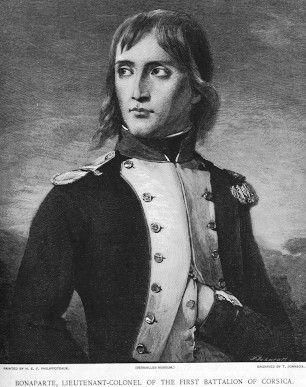Today, a note on Napoleon and ironworks. The University of Houston's College of Engineering presents this series about the machines that make our civilization run, and the people whose ingenuity created them.
Two years before he took over France, Napoleon Bonaparte was only 28 and head of the French army. That year -- 1797 -- he was made a member of the Scientific Division of the Institute of France. That's right, Napoleon was honored for contributions to science! And for good reason. The young Napoleon was an important supporter of science and engineering. He'd already done a lot to strengthen the Ecole Polytechnique -- the French engineering school. A year later he made his Egyptian campaign into a scientific mission as much as a military one. It was during this campaign that a French archaeologist discovered the Rosetta stone.
But later, Napoleon's support for the applied sciences got mixed up with a fixation on architectural monuments. In 1804 -- the same year he was made emperor -- he wrote, "Men are only as large as the monuments they leave." Historian Frances Steiner tells us that Napoleon dreamt of building monuments from his military spoils -- of melting cannon into heroic structures in iron, to celebrate battles won. He was still interested in engineering, but that interest had turned to his own glory.
But there was a problem with working in iron. England had mastered iron work, but France lagged far behind. English iron was expensive, and the quality of French iron was poor. France was still smelting iron with charcoal instead of coke, and her engineers hadn't learned how to build with iron. Napoleon's new breed of French engineers was eager, and suprisingly well prepared, to take up the challenge; but French architects were consummate artists in granite. They wanted nothing to do with iron.
During Napoleon's reign as emperor, some major works were done in iron. A number of bridges were built with varying success. Once they got the hang of it, the French built a 106-foot arch over the Seine River and named it after the Battle of Austerlitz. The toughest job was building a 129-foot iron dome over a circular grain exchange. It was finished just two years before Waterloo, at seven times the original cost estimate.
France didn't, by any means, catch up with England during Napoleon's reign. She had too far to go. France eventually built the Eiffel Tower and the Statue of Liberty using iron, but that was 70 years after Napoleon. Napoleon did start France on its way to iron construction. But his greatest gift didn't spring from his craving for monuments. History has shown that the younger, more idealistic, Napoleon left us a far more important gift in the foundation he helped to lay for education in the applied sciences.
I'm John Lienhard, at the University of Houston, where we're interested in the way inventive minds work.
(Theme music)
Steiner, F. H., Building with Iron: A Napoleonic Controversy. Technology and Culture, Vol. 22, No. 4, October 1981, pp. 700-724.
This episode has been revised as Episode 1467.

From the January 1895 Century Magazine